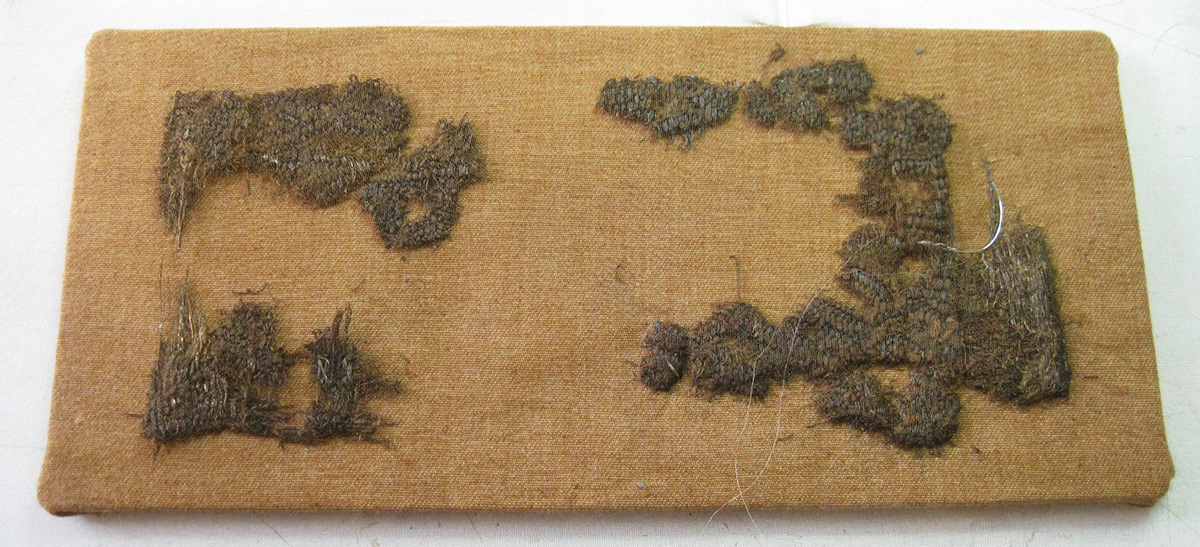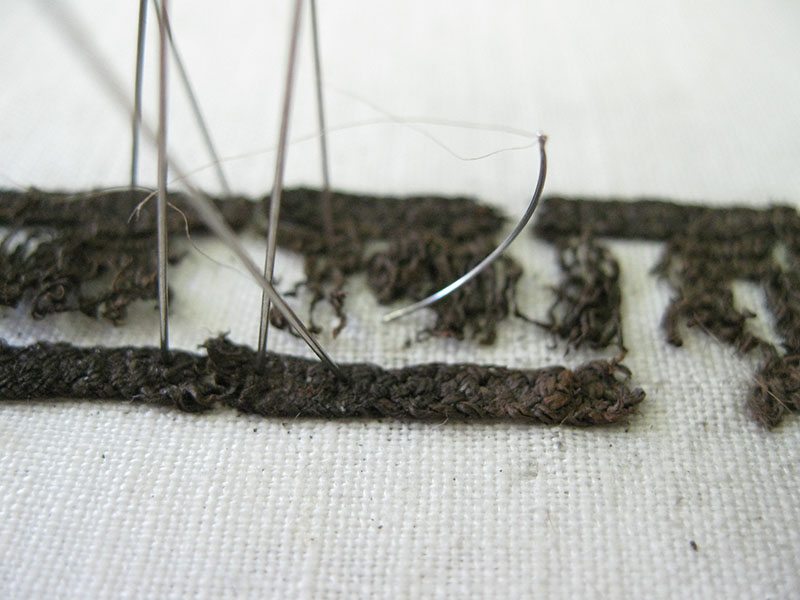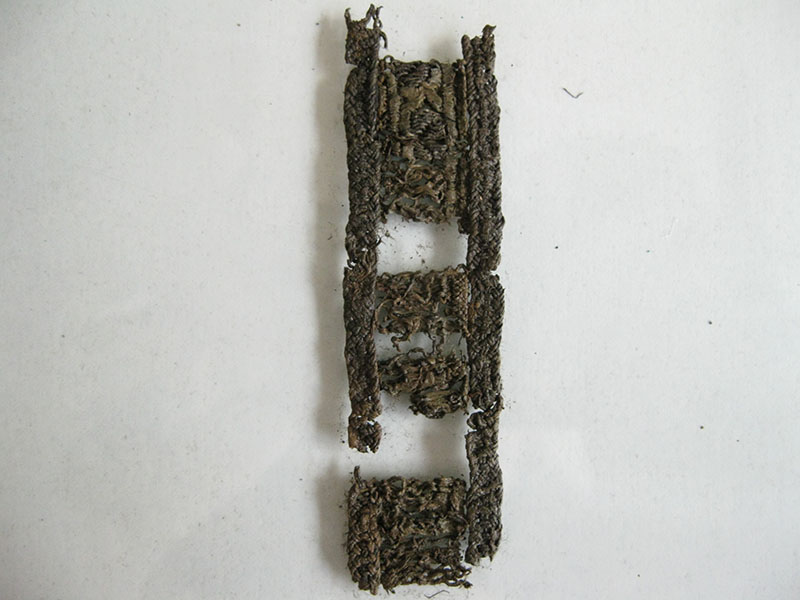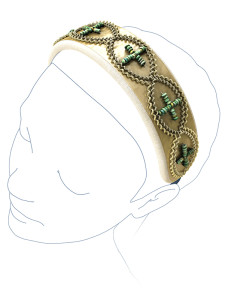I obtained the textile fragments pinned on polystyrene board, covered by tulle. According to the inscriptions on the board the textiles remained on the body of a young girl, on her chest and arms. Unfortunately I couldn’t make any reconstruction because of the lack of professional excavation and proper photo documentation. I tried to deduce the type of the original clothing by comparing it with the fashion of the era. I concluded that the fragments are parts of a shoulder corset. It was immediately visible that they are composed of two different kind of textiles, with one of them conserved in much more intact condition. The silk textiles were richly woven by metal threads.
I took samples from the metal threads. The chemical examination identified the material as gold, with the a minimal presence of silver. I cleaned the fragments carefully by watering them with a sprayer and sponging back the humidity immediately with a blotting paper (I added Barquat antiseptic to the water). After cleaning I arranged the textile in grainline. After it dried I kept on treating the fitting parts together. I coloured a silk textile (bound in cloth) to similar color as the original parts, then I covered an acid-free board with it. I coloured a silk aid material and an unspun silk thread as well. I fitted the fragments to the board, then covered it with the silk aid material and sewed the edges with silk thread, without sewing into the original textile to avoid further damage. I created a box of acid-free cardboard to safely store the fragments. The unfittable fragments are kept in a different box.







